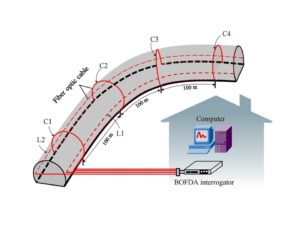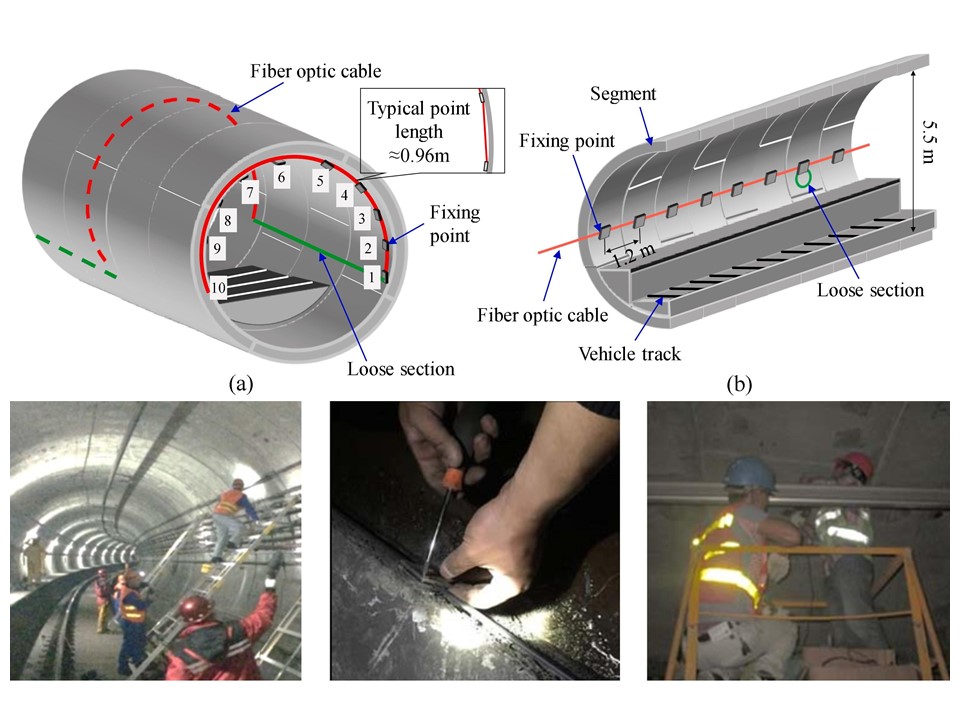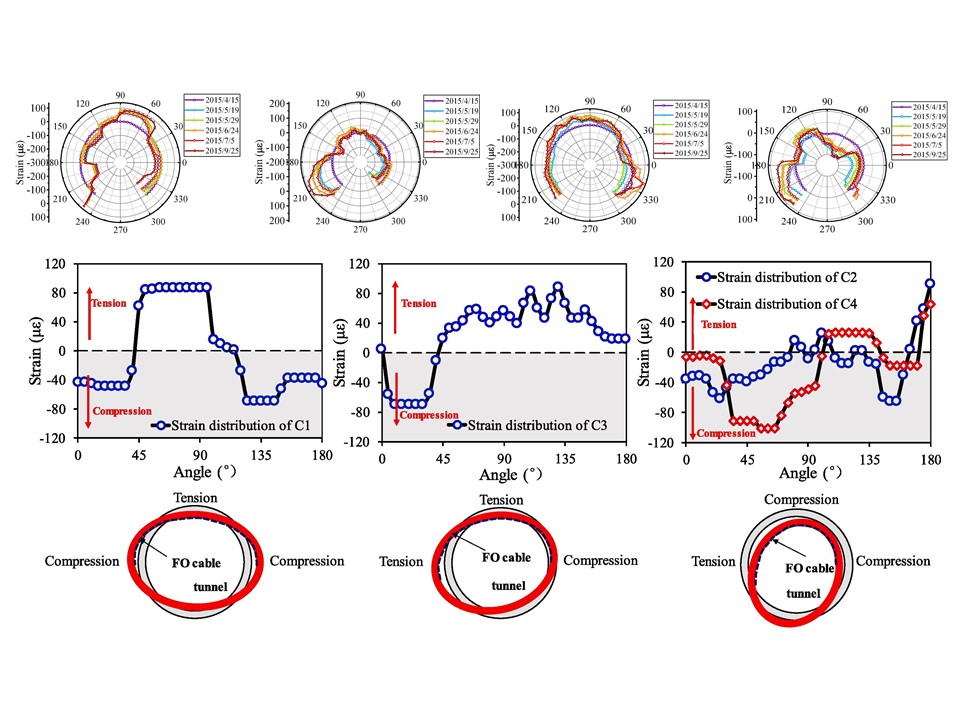作者:朱鸿鹄, 王德洋, 施斌, 王兴, 魏广庆
单位:南京大学地球科学与工程学院,南京大学大地探测与感知研究院,苏州南智传感科技有限公司
摘要:随着我国长三角地区城镇化进程的加速和人口的迅速增长,大量地铁隧道已经投入运营或正在建设中。与此同时,邻近深基坑开挖的工况变得日益频繁。特别是对于弯曲的盾构隧道,由于其结构的不对称性,开挖所引起的地表变形特征更为复杂。本文详细阐述了苏州地区一处黏土层中弯曲盾构隧道的监测案例。在邻近开挖施工期间,我们采用基于布里渊光频域分析(BOFDA)技术的光纤神经传感系统,对隧道纵向和环向的应变和变形进行了细致入微的监测,从而全面捕捉了邻近开挖对隧道结构的影响。监测结果表明,隧道衬砌主要沿隧道走向发生弯曲变形。我们在隧道下方观测到了最大压应变,其绝对值高于隧道拱顶处测得的最大拉应变。这种差异性应变导致隧道从原本的圆形结构扭曲变形,逐渐变为椭圆形/椭球形。基于监测结果,本文提出了两种反映隧道管片三维变形与应变传感光缆测值之间关系的运动学模型。此外,提出了一种将应变测量结果转换为隧道衬砌径向位移的力学方法,并使用纵向和环向风险指数评估隧道的结构健康状况。本研究得出的结论有助于更好地了解邻近开挖工况下弯曲盾构隧道的变形模式和健康状况。



Performance monitoring of a curved shield tunnel during adjacent excavations using a fiber optic nervous sensing system
Journal: Tunnelling and Underground Space Technology, 2022, p. 104483
Authors: Hong-Hu Zhu, De-Yang Wang, Bin Shi, Xing Wang, Guang-Qing Wei
Abstract: With the accelerated urbanization and population growth in the Yangtze River Delta of China, numerous metro tunnels are in operation or under construction, and adjacent deep excavation activities are frequently encountered. For curved shield tunnels, the impact of excavation-induced ground movements is more complicated due to their asymmetric shape. This paper presents the monitoring results of a curved shield tunnel in clayey soil in Suzhou, China, which were captured by a fiber optic nervous sensing system. This system utilized Brillouin optical frequency domain analysis technology to monitor the distribution of longitudinal and circumferential strains of tunnel linings induced by adjacent excavation. The results show that the tunnel linings were mainly subjected to bending deformations along the tunnel alignment. Maximum compressive strains were observed below the tunnel springline, and their absolute values were higher than those of maximum tensile strains measured at the tunnel crown, distorting the circular tunnel into a rotated oval/ellipsoid. Based on the monitoring results, two kinematic models reflecting the spatial relationship between movements of tunnel segments and measurements of strain sensing cables are proposed. Furthermore, a mechanical method is proposed to convert strain measurements into radial displacements of tunnel linings and the structural health condition of the tunnel is evaluated using longitudinal and circumferential risk indexes. The conclusions drawn in this study provide improved insight into the deformation pattern and health condition of curved shield tunnels subjected to adjacent excavations.
